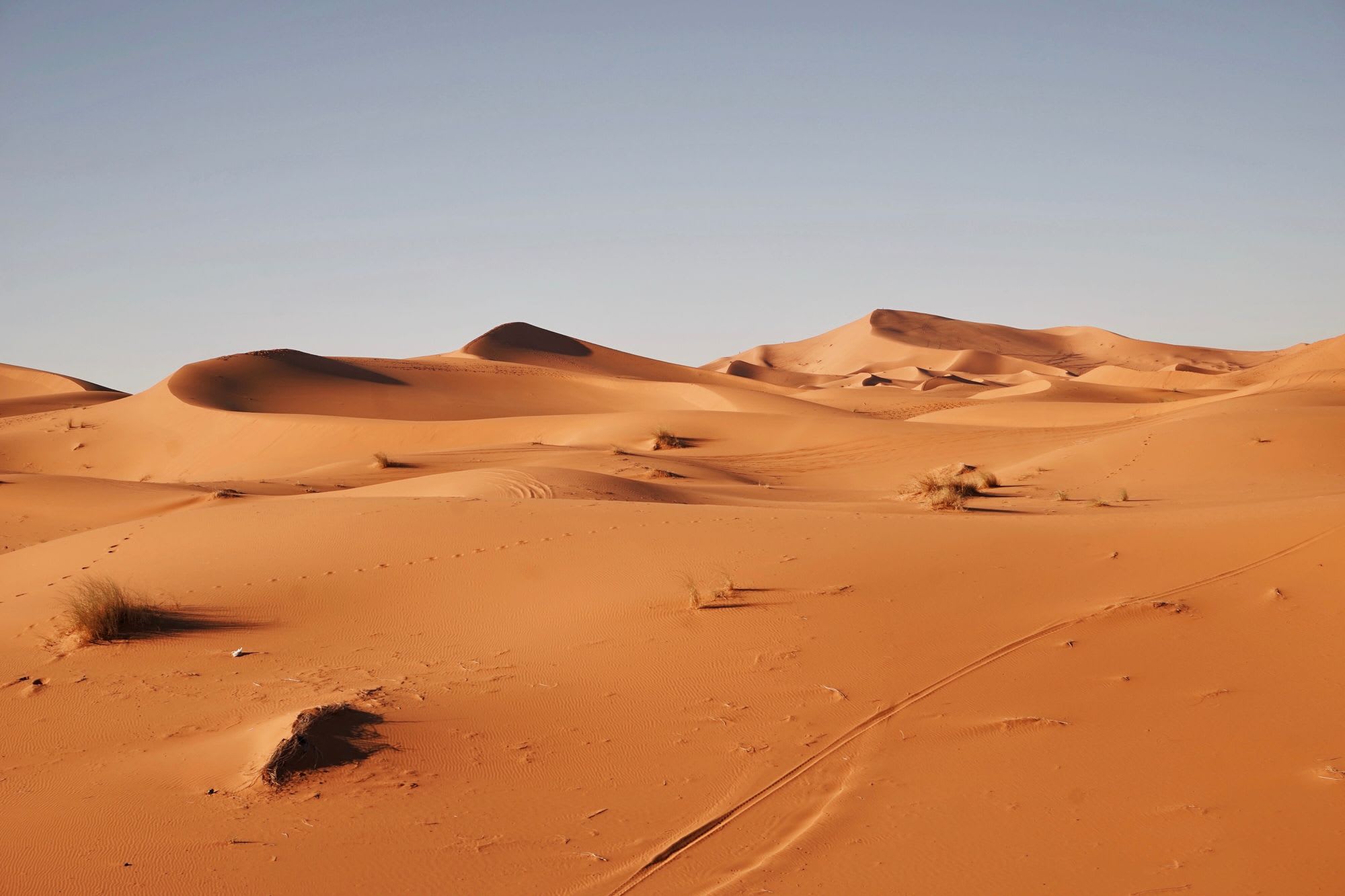Today, the Sahara Desert, which covers much of North Africa, is regarded as the world’s largest hot desert and the world’s third largest desert, after the deserts of Antarctica and the northern Arctic. However, this desert was once bursting with vegetation, grasslands, lakes and rivers, providing a suitable environment for humans to inhabit. So how did such an enormous transformation happen?
The North African Climate Cycles
Scientists believe the periodic transformation of the Sahara region has to do with a unique phenomenon called the North African climate cycles. As the Earth rotates around the sun, the strength of the North African monsoon changes due to changes in insolation; that is, the amount of solar radiation received on a given surface in a given period. When the monsoon is at its weakest, annual precipitation decreases, giving emergence to what is called the “dry Sahara”. Conversely, when the monsoon is at its strongest, annual precipitation significantly increases and the “green Sahara” is formed.
This phenomenon is what happened around 10,500 years ago, when the formerly desiccated land transformed into an inhabitable savannah land. In 2006, researchers found 500 new radiocarbon dates of human and animal remains from over 150 excavation sites across the Sahara to attest to this.
The North African climate cycles are estimated to repeat every 20,000 years, causing a periodic transformation from the “green Sahara” to the “desert Sahara”. In fact, a 2015 study published in the Nature Communications journalrevealed that the green Sahara periods, dubbed “African humid periods”, spurred the formation of an ancient river system that would rank as the world’s 12th largest drainage basin if it were in existence today.
Using orbital radar satellite imagery, Charlotte Skonieczny, of the L’Institut Français de Recherche pour l’Exploitation de la Mer, and her colleagues discovered proof of the existence of a buried 500km-long paleo-drainage network on the Mauritanian coast. In addition, they found that a major river system was likely reactivated during some of the humid periods over the past 245,000 years.
The Switch Back to Desert
Although much of the climatic fluctuations can be explained by the aforementioned insolation cycle, there is still some obscurity surrounding the phenomenon. The most recent switch from green Sahara to dry Sahara, between 8,000 and 4,500 years ago, happened rather abruptly and so did not follow the expected pattern.
In 2017, David Wright, an environmental archaeologist at Seoul National University in South Korea’s capital, theorised that humans were responsible for the rapid termination of the last African Humid Period. In his study, Wright attributed the quick desertification of the Sahara to pastoralism, amongst other factors.
Drawing from examples of cases wherein the introduction of domesticated livestock denuded previously uncultivated land, Wright suggested that the rearing of livestock by NeolithicAfrican populations catalysed the latest formation of the dry Sahara. While the earth’s isolation cycles did have a part to play, he argued that such human actions induced the crossing of ecological tipping points, thereby altering the local climate.
“The Neolithic quest to maximise ACP [anthropocentric productivity] may have pounded the final nails into NPP [net primary productivity] coffin, and desertification of the Sahara was the end result of the cumulative process,” said Wright.
In an interview with Popular Science, Wright explained that unlike wild animals who inhabit deserts, livestock—goats, sheep, cows and so on—spend a lot of time grazing and stripping fields of vegetation.
“Goats are the prime suspects,” said Wright. “I’ve literally seen a goat eat a brick — they aren’t picky eaters at all, and they eat a lot for their size. It wouldn’t take many goats on a stressed out landscape to make a pretty big impact.”
As the goats—and other livestock—grazed, they would have exposed ground that was previously hidden beneath the vegetation. Consequently, the lack of greenery would have heightened the land’s ability to reflect light, causing the light to go back into the atmosphere and heat it up. This resulted in less rain since, according to Wright, “In the tropics, a heated atmosphere tends to have fewer clouds than a cooler atmosphere”.
Furthermore, the drought stunted the growth of vegetation and this in turn worsened the growth, resulting in a feedback loop that eventually turned the region back to the wasteland.
However, someresearchers are opposed to Wright’s views. Jon Foley, a climatologist and the executive director of California Academy of Sciences, argued that the loss of vegetation in the region prompted by the Earth’s orbital changes was a more probable explanation. Plants soak up moisture from the ground and release it as water vapour into the atmosphere through their leaves. So, when there was less vegetation, it meant that there was less water vapour in the air and consequently, less rainfall.
Foley described Wright’s hypothesis as a “thought-provoking idea”, but noted that the evidence available was insufficient to prove it.
This problem of insubstantial evidence is why Wright believes that archaeologists, such as himself, and ecologists must unite to “go out and get the data”, so they can model the effect of vegetation on climate systems more accurately.
Whatever the case, it is expected that the coming generations will witness a green Sahara in a few thousand years.

Oyindamola Depo Oyedokun
Oyindamola Depo Oyedokun is an avid reader and lover of knowledge, of most kinds. When she's not reading random stuff on the internet, you'll find her putting pen to paper, or finger to keyboard.
follow me :
Leave a Comment
Sign in or become a Africa Rebirth. Unearthing Africa’s Past. Empowering Its Future member to join the conversation.
Just enter your email below to get a log in link.


Related News
Lesotho and the British: Why the South-Africa-Locked Country is Not Part of South Africa
Oct 02, 2023
How Ethiopians Fought and Defeated Italians in the Battle of Adwa
Sep 18, 2023
5 Interesting African Creation Stories You Should Know About
Sep 06, 2023